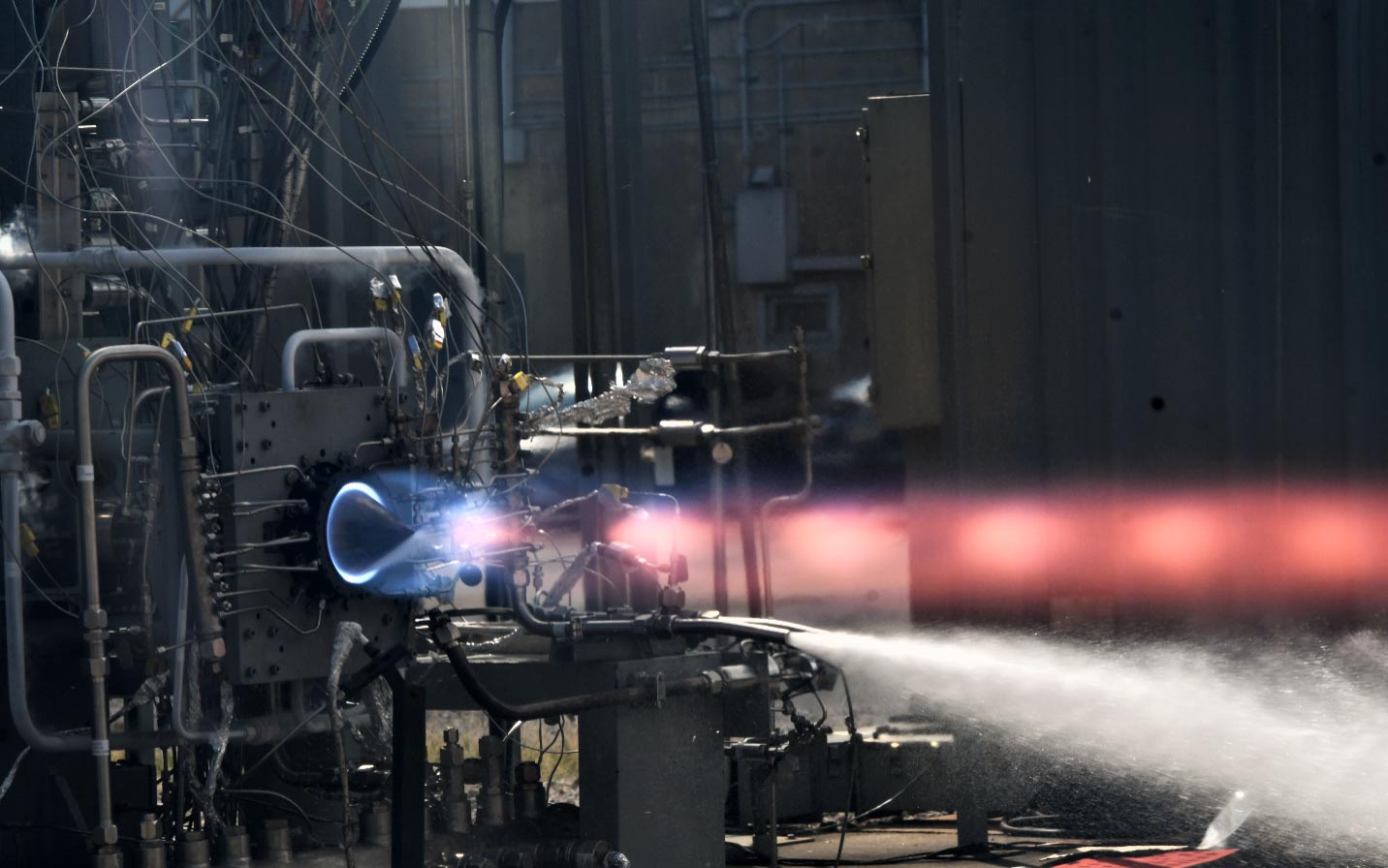
Rotary Detonation Rocket Engine oder RDRE Hot Fire Test im Marshall Space Flight Center. Bildnachweis: NASA
mögen[{“ attribute=““>NASA takes its first steps toward establishing a long-term presence on the Moon’s surface, a team of propulsion development engineers at NASA have developed and tested NASA’s first full-scale rotating detonation rocket engine, or RDRE, an advanced rocket engine design that could significantly change how future propulsion systems are built.
The RDRE differs from a traditional rocket engine by generating thrust using a supersonic combustion phenomenon known as a detonation. This design produces more power while using less fuel than today’s propulsion systems and has the potential to power both human landers and interplanetary vehicles to deep space destinations, such as the Moon and Mars.
Ingenieure ein NASA Marshall Space Flight Center in Huntsville, Alabama, und der Hauptmitarbeiter IN Space LLC mit Sitz in West Lafayette, Indiana, bestätigen Daten von RDRE-Heißfeuertests, die 2022 im Eastern Marshall Test Area durchgeführt wurden. Der Motor wurde über ein Dutzend Mal gezündet, was insgesamt fast 10 Minuten dauerte.
RDRE hat sein primäres Testziel erreicht, indem es gezeigt hat, dass seine Geräte – hergestellt mit neuer additiver Fertigung oder 3D-Druck, Designs und Prozessen – über einen längeren Zeitraum betrieben werden können und dabei den extremen Hitze- und Druckumgebungen standhalten, die durch Sprengungen erzeugt werden. Bei Vollgasbetrieb erzeugte der RDRE etwa eine Minute lang mehr als 4.000 Pfund Schub bei einem durchschnittlichen Kammerdruck von 622 psi, dem höchsten Nenndruck aller Zeiten für diese Konstruktion.

Rotary Detonation Rocket Engine oder RDRE Hot Fire Test im Marshall Space Flight Center. Bildnachweis: NASA
RDRE enthält von der NASA entwickeltes Kupfer[{“ attribute=““>alloy GRCop-42 with the powder bed fusion additive manufacturing process, allowing the engine to operate under extreme conditions for longer durations without overheating.
Additional milestones achieved during the test include the successful performance of both deep throttling and internal ignition. This successful demonstration brings the technology closer to being used with future flight vehicles, enabling NASA and commercial space to move more payload and mass to deep space destinations, an essential component to making space exploration more sustainable. Because of NASA’s recent success with the RDRE, follow-on work is being conducted by NASA engineers to develop a fully reusable 10,000-pound class RDRE to identify performance benefits over traditional liquid rocket engines.

Thrust propulsion testing and characterization of the University of Central Florida rotating detonation rocket engine is shown in this photo. NASA provided funding for a UCF project focused on rotating detonation rocket engines, which use high-energy explosions to produce more energy with less fuel, improving engine efficiency and cutting down space travel costs and emissions. Credit: UCF
RDRE is managed and funded by the Game Changing Development Program in NASA’s Space Technology Mission Directorate.

„Überall Tierfreund. Aufreizend bescheidener Verfechter der Popkultur. Extremer Bierfanatiker. Social-Media-Fan. Typischer Gamer.“

/thumbs.vodgc.net/1-14-iyuaLD1714089084720-1714089305.jpg)

More Stories
Das Hubble-Bild könnte Hinweise auf Sternkannibalismus in einem hantelförmigen Nebel enthalten
Hubble feiert seinen 34. Jahrestag mit einem atemberaubenden Blick auf den Kleinen Hantelnebel
Im Katzenkrallennebel verbirgt sich eines der größten jemals gesehenen Weltraumteilchen